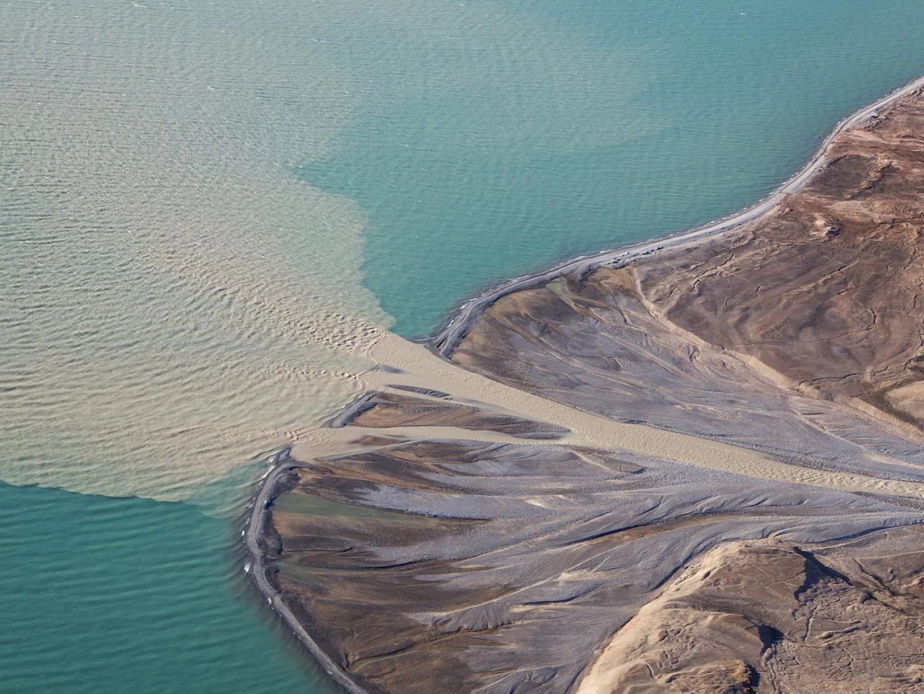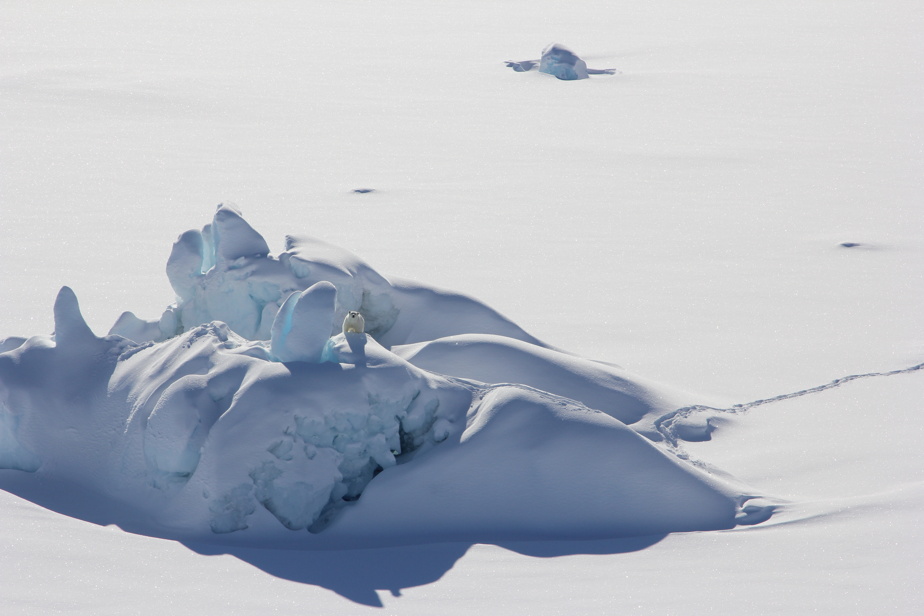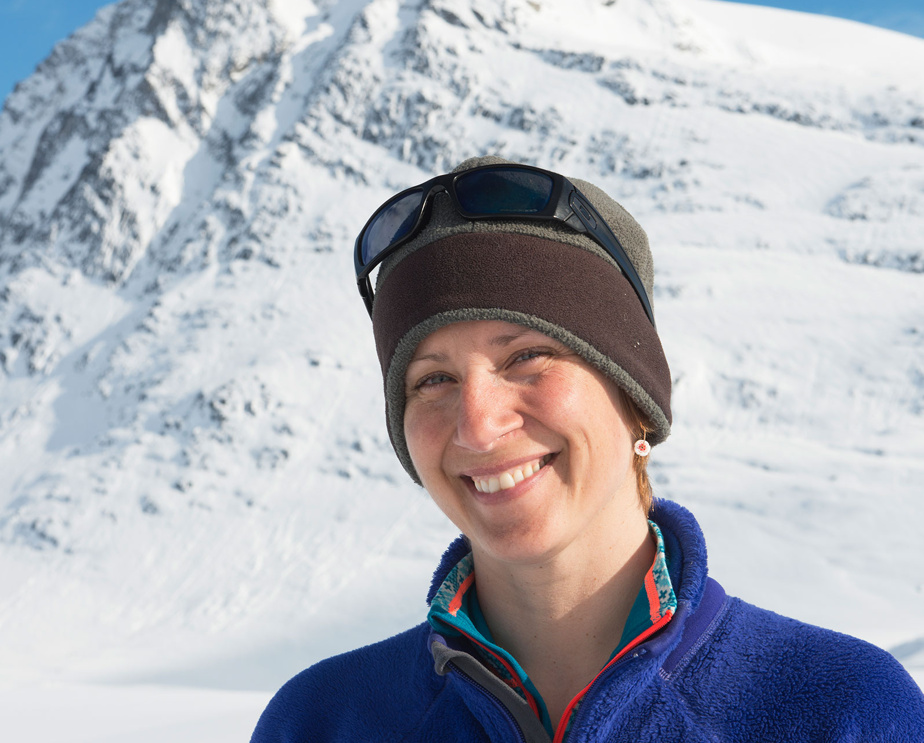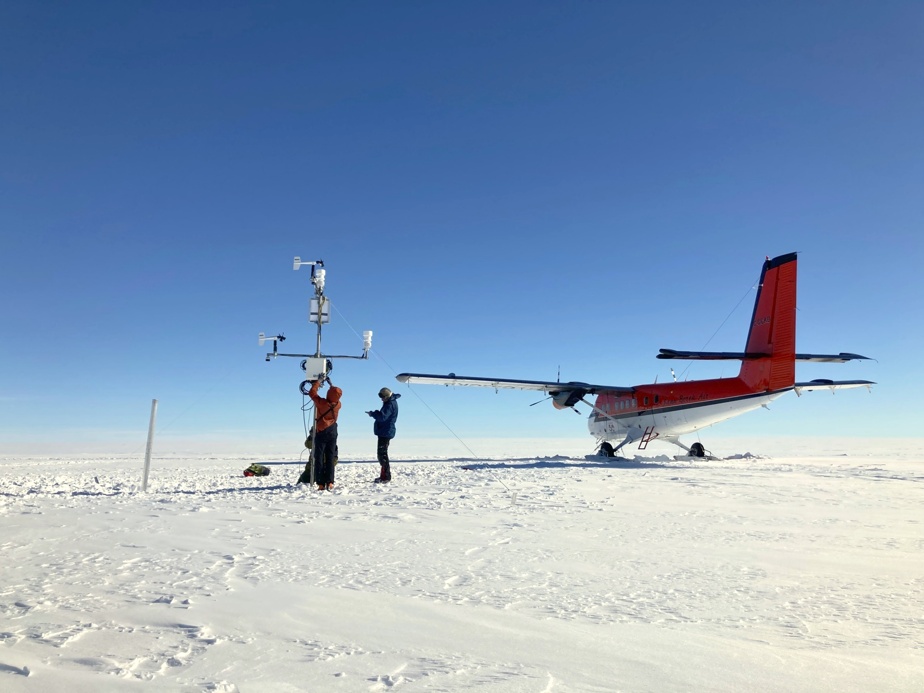Posted at 12:00 a.m.
Mecca of sand

PHOTO MARTIN CÍGLER, FROM WIKIMEDIA COMMONS
Sermilik Fjord is one of the sites targeted by the island government as a future sand mine for export.
100 km south of Nuuk, the capital of Greenland, is the Sermilik Fjord. Protected from storms by its narrowness, it is one of dozens of sites targeted by the island government as a future sand mine for export.
Sermilik alone could increase the amount of sand exported worldwide by 3%. “With the melting of the glaciers, there is a lot of sediment accumulation on the coasts of Greenland,” explains Mette Bendixen, a political scientist from McGill University who has been collaborating for several years with Greenland on this subject.

PHOTO ASGER MELDGAARD, PROVIDED BY METTE BENDIXEN
Mette Bendixen, political scientist at McGill University
There is a lot of interest in creating a sand industry in Greenland. It could be a benefit of climate change for the country.
Mette Bendixen, political scientist at McGill University
In mid-August, in the review Nature SustainabilityMme Bendixen added a key element to the reflection: a poll showing that more than 80% of the population of Greenland is in favor of the export of sand and that only 8% oppose it. “It surprised us, because in other mining cases, public opinion is more divided,” said Ms.me Bendixen. It must be said that the unemployment rate is high in Greenland and the level of education is low. So economic development through natural resources is attractive. Greenland is responsible for 8% of all sediment that flows into the oceans each year.
The basics of sand

PHOTO PROVIDED BY GEUS
A Greenlandic river throws its sediments into the sea.
On Earth, 23 times more sand is used now than in 1900 to build buildings and other infrastructure, according to a study by Mme Bendixen published in 2019 in Nature Sustainability. In 2017, the global demand for sand was 9550 million tons, for a value of almost 100 billion US.
China is the largest sand producer in the world, accounting for more than 20% of total sales, while the United States is the leading exporter, between 400 and 500 million tonnes per year. Canada is one of the United States’ top customers for sand, with imports varying between 100 and 300 million tonnes since 2010, according to a study published in 2017 in the journal Sustainability.
Oil and mining
Last year, Greenland banned oil exploration and uranium mining on its territory. And yet, the population is not fiercely opposed to the extraction of mineral resources, according to Rasmus Leander Nielsen, a political scientist at the University of Greenland.
“There has been a lot of pressure from environmental NGOs for Greenland to give up oil exploration, for example. But it took Siumut, the traditionally ruling party, losing last year for that to become a reality. »

PHOTO FROM THE UNIVERSITY OF GREENLAND WEBSITE
Rasmus Leander Nielsen, political scientist at the University of Greenland
The population wants economic growth — and with the melting of the glaciers, there are very interesting deposits. Greenlanders don’t want rich countries, which have benefited from industrialization, telling them what to do.
Rasmus Leander Nielsen, political scientist from the University of Greenland
“That said, he adds, a majority opposes certain projects that can harm existing activities. »
Siumut has governed the island almost uninterruptedly since the start of the Greenlandic Parliament in 1979. The party currently in power, Inuit Ataqatigiit, is a pro-independence party. He previously ruled the island between 2009 and 2013. Denmark still funds about half of Greenland’s government budget, but that amount is frozen at 2009 levels, under a delegation agreement that made Greenland an almost independent country.
Polar bears

PHOTO PROVIDED BY KRISTIN LAIDRE
A polar bear from the population studied by Kristin Laidre
In southeastern Greenland, Kristin Laidre has found a subspecies of polar bears that have a surprising behavior: they hunt from glaciers, instead of using sea ice as a hunting ground. “It means that they can hunt even if there is no more ice floating on the sea,” explains the biologist from the University of Washington, who described his research at the end of June in the journal Science.

PHOTO FROM THE UNIVERSITY OF WASHINGTON WEBSITE
Kristin Laidre, biologist from the University of Washington, Greenland
“We have observed their behavior for ten years and we have just shown that they constitute a genetically isolated population. The several hundred animals in this group weigh 20% less — 100 kg — than the average for other polar bears and have fewer cubs. This tells University of Alberta polar bear scientist Andrew Derocher that this is a group on its last few miles. “You have to see what they hunt from the glaciers,” says Derocher. If they are emaciated, it means that it does not feed them much. »
The sea level

PHOTO VADIM NEFEDOV, GETTY IMAGES
Glacier near Kangerlussuaq, Greenland
The glaciers of Greenland are much smaller than those of Antarctica. So far, they have contributed almost as much to sea level rise: between 21 and 24 cm more than in 1880, according to the National Oceanic and Atmospheric Administration of the United States (NOAA).
A recent study by the Geological Survey of Greenland and Denmark (GEUS) estimates that by 2100, Greenland could add another 15 to 20 cm to sea level. Nature Climate Changethe study estimates that even if greenhouse gas emissions decline and the temperature stabilizes around 2 degrees above the pre-industrial era average, the melting of Greenland’s glaciers will cause the level of the sea of 27 cm in the next centuries.

PHOTO PROVIDED BY GEUS
Summer station for measuring glacier melt in Greenland
This is a lower estimate than another study, published in 2019 in PNAS, which calculated that the melting of Greenland’s glaciers would raise sea levels by 330 to 490 cm by 2100. That said, the GEUS study notes that the figure of 27 cm corresponds to the average melt between 2000 and 2019. If the year with the greatest melt, 2012, is used, the sea level will rise by only 78 cm with the Greenland glaciers.
Learn more
-
- 50,000
- Inuit population of Greenland, out of a total of 56,000
SOURCE: University of Greenland
-
- 34
- Annual melting of Greenland’s glaciers, in billions of tonnes, from 1992 to 2001
SOURCE: NOAA
- 247
- Annual melting of Greenland’s glaciers, in billions of tonnes, from 2012 to 2016
SOURCE: NOAA
-
- 51
- Annual melting of Antarctic glaciers, in billions of tons, from 1992 to 2001
SOURCE: NOAA
- 199
- Annual melting of Antarctic glaciers, in billions of tonnes, from 2012 to 2016
SOURCE: NOAA

